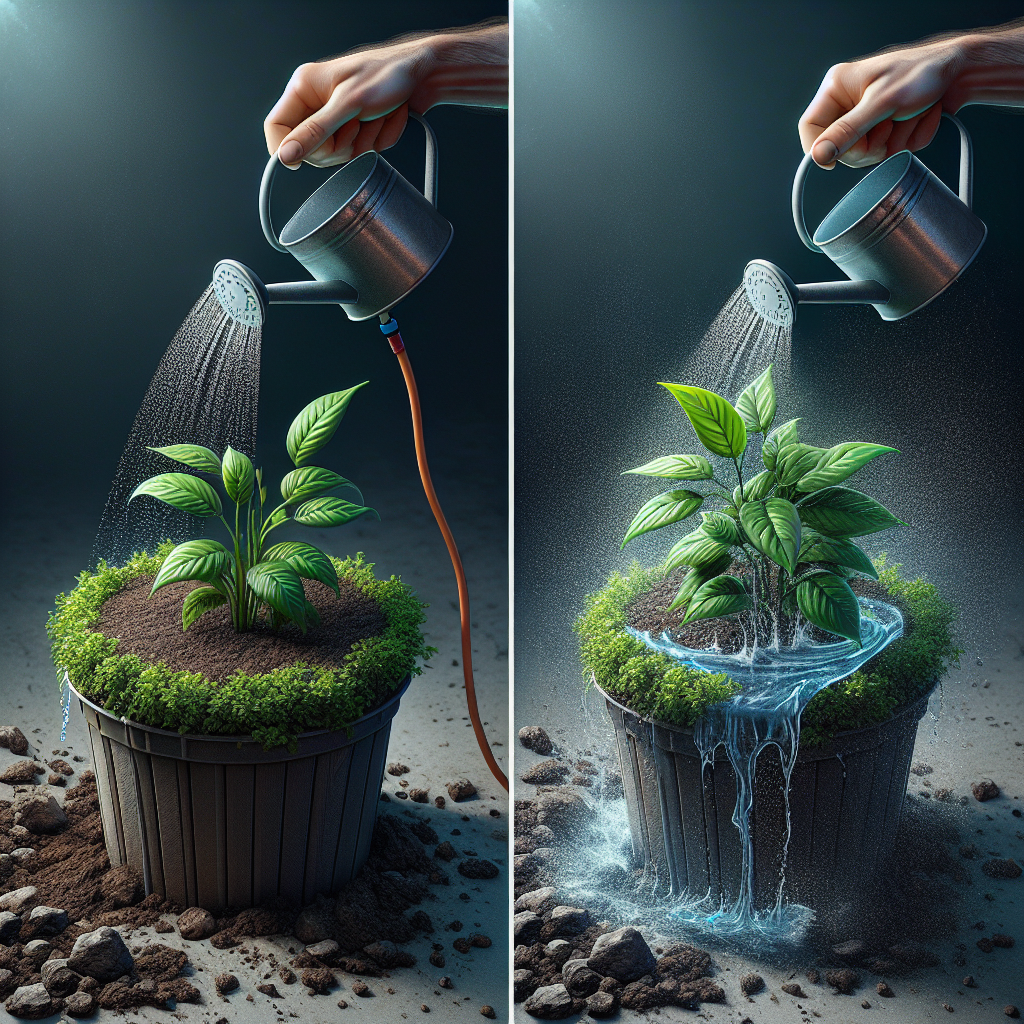Table of Contents
Introduction
When it comes to caring for your container plants, one of the key decisions you’ll need to make is how to water them. Two popular methods for watering container plants are slow drip irrigation systems and manual watering. Both methods have their own set of pros and cons, so it’s important to understand the differences between the two before deciding which is best for your plants.
In this article, we will explore the benefits and drawbacks of both slow drip and manual watering methods for container plants. By the end of this article, you will have a better understanding of which method may be best suited for your specific gardening needs.
Slow Drip Irrigation
Slow drip irrigation systems are a type of watering system that delivers water directly to the plant’s root zone at a slow and consistent rate. These systems typically consist of hoses or tubing with small holes or emitters that allow water to drip out slowly over a period of time. Slow drip irrigation systems are often used in larger gardens or commercial settings, but they can also be beneficial for container plants.
One of the main benefits of using a slow drip irrigation system for your container plants is that it helps ensure consistent moisture levels in the soil, which is crucial for plant health. By delivering water directly to the root zone, slow drip irrigation can help prevent overwatering and reduce water waste compared to other watering methods.
Manual Watering
On the other hand, manual watering involves using a watering can or hose to water your container plants as needed. This method allows you to control exactly how much water each plant receives and gives you the flexibility to adjust your watering schedule based on factors like weather conditions and plant growth.
While manual watering may be more time-consuming than using a slow drip irrigation system, it does offer some advantages. For example, manual watering allows you to closely monitor each plant’s individual needs and make adjustments as needed. It also gives you the opportunity to inspect your plants regularly for signs of overwatering or underwatering.
Which Method is Better?
When deciding between slow drip irrigation and manual watering for your container plants, there are several factors to consider. The size of your garden, the types of plants you are growing, and your personal gardening style will all play a role in determining which method is best suited for you.
If you have a large garden with many containers or if you frequently forget to water your plants, a slow drip irrigation system may be the better choice. These systems can help save time and ensure that all your plants receive adequate moisture without constant oversight.
On the other hand, if you enjoy hands-on gardening and prefer a more personalized approach to caring for your plants, manual watering may be the way to go. Manual watering allows you to develop a closer relationship with your plants and gives you greater control over their care.
Frequently Asked Questions
- How often should I water my container plants?
The frequency of watering will depend on factors like plant type, soil type, weather conditions, and container size. Generally speaking,
most container plants will need water when the top inch or two of soil feels dry. - Can I use both slow drip irrigation and manual watering?
Yes! You can certainly use both methods in conjunction with each other. For example,
setting up a slow drip system as a base level of hydration while supplementing with manual
watering when needed. - What are signs that my container plants are being overwatered?
Signs of overwatering include yellowing leaves,
mushy stems,
moldy soil,
or standing water in saucers.













